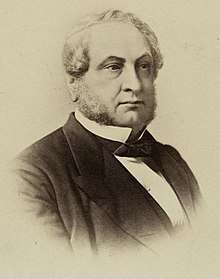Sénatus-consulte
A sénatus-consulte (French translation of the Latin phrase senatus consultum) was a feature of French law during the French Consulate, First French Empire and Second French Empire.
Consulate and First Empire
It was an act voted on by the Sénat and had the force of law. Organic 'sénatus-consultes' modified the French Constitution and 'sénatus-consultes simples' ruled on its enaction.
Second Empire
After the French coup of 1851, Napoleon I's institutional architecture was reintroduced. Executive power was retained by Napoleon III, who divided legislative power between two chambers - the Corps législatif (where deputies could only make laws on the initiative of the civil service Conseil d'État) and the Sénat (whose members were named for life by the emperor). The Sénat could vote on sénatus-consultes, acts with the force of law, to adapt France's institutions and modify the French Constitution of 1852. Initially used to found and reinforce the imperial and authoritarian character of the Second Empire, the sénatus-consultes ended up helping the regime evolve into a 'liberal empire' from the 1860s onwards by giving more powers to the Parlement.
List

Imperial regime
Sénatus-consultes of variable importance under the authoritarian regime (1856–1858)
Sénatus-consultes marking the regime's liberal evolution (1860s-1870)
